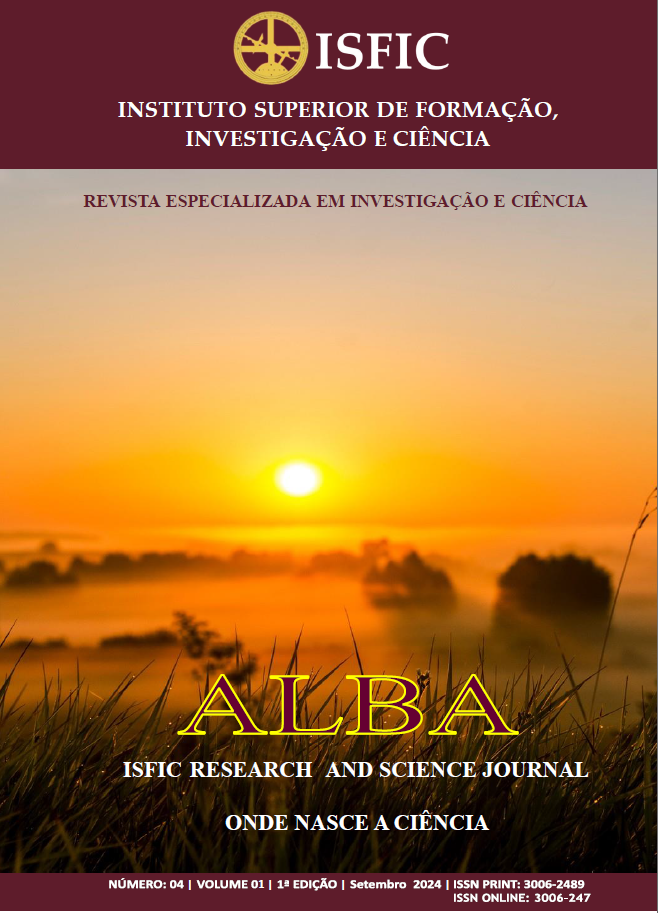The relationship between the Prime Rate and the sectors of the Mozambican economy
Keywords:
Prime Rate, Economic Sectors, MIMO, MozambiqueAbstract
The Prime Rate, or basic interest rate, is a fundamental indicator for understanding the financial dynamics of many economies around the world. In Mozambique, this rate plays a pivotal role in determining the cost of credit for consumers and businesses, influencing investment, consumption, and even saving decisions. The sectors of the Mozambican economy, from agriculture to services, are directly or indirectly impacted by fluctuations in the Prime Rate. A detailed analysis shows that the industrial segment is notably affected by both the Prime Rate and the MIMO. More specifically, an increase in the Prime Rate or MIMO leads to a significant reduction in the target metric of this segment. These two metrics, together, account for more than half of the changes in the industrial sector. Turning to the commercial sector, we see links between the Prime Rate, MIMO, and the metric in focus, but they are not statistically significant. Fluctuations in the Prime Rate and MIMO account for a smaller portion of the variation in this sector, not exceeding twenty percent. Regarding the services segment, both the Prime Rate and MIMO have a limited impact. Changes related to the Prime Rate, though present, are not significant from a statistical standpoint. As for the MIMO, its effect in this sector is almost negligible, representing only a small fraction of the observed changes.
Downloads
References
Banco de Moçambique. (2018). Relatório Anual do Banco de Moçambique. Banco de Moçambique.
Banco de Moçambique. (2023). Banco de Moçambique. [Website]. Recuperado em 16 de março de 2023, de https://www.bancomoc.mz/pt/
Bila (2006), Alberto T. Competition Scenario in Mozambique.
Broto, V. C. (2017). Energy sovereignty and development planning: the case of Maputo, Mozambique. International Development Planning Review, 39(3), 229-248.
FAO (2016). "The Fisheries Sector in Mozambique: Challenges and Opportunities". Food and Agriculture Organization Report,.
Fernandes, A., & Pereira, J. (2018). Monetary Policy in Emerging Economies: The Case of Mozambique. Journal of African Economics, 27(2), 245-268.
Gil, D. V. (2019). Metodologia cientifica.
Gorongosa National Park. (2020). Relatório Anual. Gorongosa National Park.
Gujarati, D. N., & Porter, D. C. (2009). Econometria básica. AMGH Editora.
Henriques, H. J. (2023). Sovereignty and Direct Citizen Participation in Government Policies in Mozambique in the Context of Southern African Development Community. Integration in the Southern African Development Community Region: Peoples' Agency, Popular Participation, and Democratization, 159.
Instituto Nacional de Estatística [INE] (2023). Indicadores de Clima Económico. Maputo: Autor.
Lakatos, E. M. (2017). Metodologia do trabalho científico: projectos de pesquisa/pesquisa bibliográfica/teses de doutorado, dissertações de mestrado, trabalhos de conclusão de curso. Atlas.
Manuel, L., Chiziane, O., Mandhlate, G., Hartley, F., & Tostão, E. (2021). Impact of climate change on the agriculture sector and household welfare in Mozambique: an analysis based on a dynamic computable general equilibrium model. Climatic Change, 167, 1-18.
Matsinhe, F., & Kabanda, S. (2019). Institucionalização do comércio eletrônico em Moçambique: facilitadores e barreiras. In Tecnologias de Informação e Comunicação para o Desenvolvimento. Fortalecendo a cooperação voltada para o sul como um catalisador para ICT4D: 15ª IFIP WG 9.4 Conferência Internacional sobre Implicações Sociais de Computadores em Países em Desenvolvimento, ICT4D 2019, Dar es Salaam, Tanzânia, 1 a 3 de maio de 2019, Anais, Parte I 15 (pp . 140-151). Springer International Publishing.
Mutondo, J., Villisa, D., Matchaya, G., Wilson, D., Nhlengethwa, S., & Nhemachena, C. (2019). The Challenges of Access to Financial Services in the Agricultural Sector in Mozambique. Ministry of Agriculture and Food Security.
Nguyen, D. K. (Ed.). (2022). Handbook of Banking and Finance in Emerging Markets. Edward Elgar Publishing.
Quak, E. J., Barenboim, I., & Guimaraes, L. (2022). Female Entrepreneurship and the Creation of More and Better Jobs in Sub-Saharan African Countries.
Sambo, M. F. (2022). The Politics and Political Economy of Violent Conflicts in Post-war Mozambique. In Globalisation and Local Conflicts in Africa and Asia (pp. 83-116). Singapore: Springer Singapore.
UKALD (2017). "Urbanization in Mozambique: Assessing Actors, Processes, and Impacts of Urban Growth ". Cities Alliance,
World Bank (2014). "Harnessing the Potential of Mozambique's Power Sector". World Bank Report.
World Health Organization. (2017). Health System in Mozambique: Challenges and Prospects. WHO.
World Travel & Tourism Council. (2019). Glbal Economic Impact & Trends. WTTC
Xue, H., Lan, X., Zhang, Q., Liang, H., & He, Z. (2021). Assessment of the green development level for participating countries in the Belt and Road initiative. Annals of Operations Research, 1-21.







